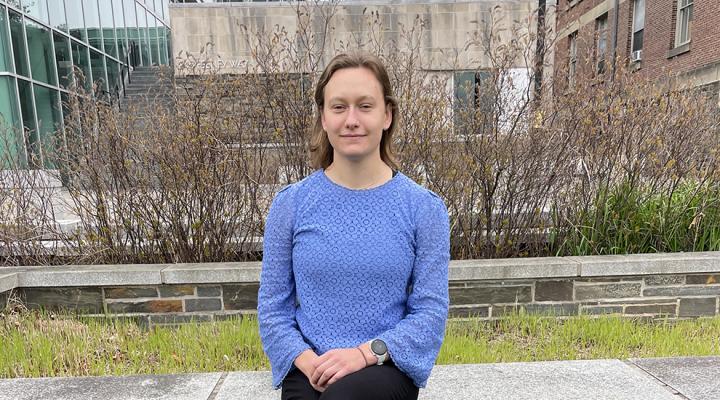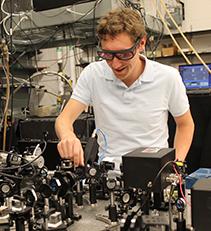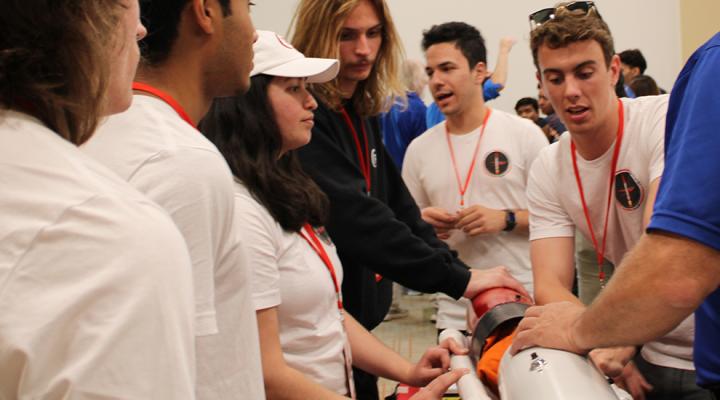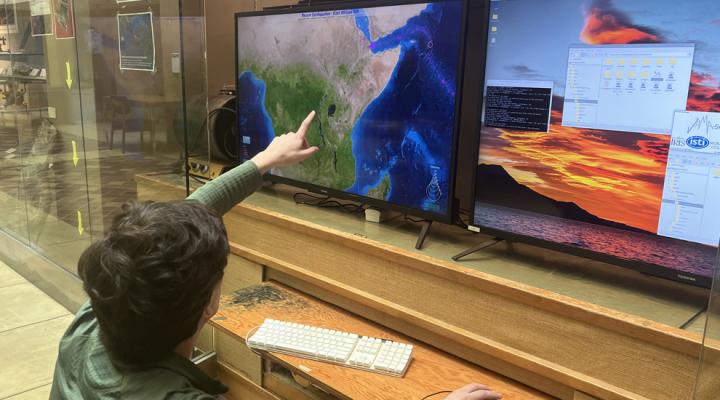Program: Ph.D. in Applied and Engineering Physics
Research Lab: Fuchs Group: Spin Dynamics at the Nanoscale
How did you become interested in engineering?
I was always interested in technical things. My grandfather was a metallurgist, and my parents encouraged me to go into something technical, and I enjoyed it, so I kept with it.
I studied physics as an undergraduate at Penn State, because I like the idea of being able to understand how things work, and then apply them, and that’s ultimately what led me to pursue a Ph.D. in Applied Physics. I like the idea of better understanding why things happen so one can more efficiently engineer them.
What are your research passions?
Our group has two sides to it—I work on the magnetic materials and devices side of things. So we do some collaboration with Bob Buhrman’s group and Dan Ralph’s group. I specifically, along with another student Darryl Ngai, who graduated last year, built up a technique for studying magnetic devices using thermal gradients. We were able to publish on that, and since then it’s been interesting to discover what the actual physics are in how we’re measuring these devices and applying our technique to new materials.
How does your research apply to the outside world?
Magnetic materials and devices are most widely used in memory storage, such as hard drives (although they’re used in many different applications). But with the technology that enabled hard drives also came some other ideas for how to apply magnetic materials to make electronics more efficient, and so there’s a real push to try and use the angular momentum component of an electron instead of just the charge to do some signal processing or memory storage in a way that is faster and more efficient that we currently do it.
In everyday applications this science would be used for information storage and transfer. Researchers have varied ideas for logic—so it’s a field where there’s lots of early research and you don’t know what’s going to pan out. But some very real technological advances have come out of this research so I’m excited to see where it goes next.
One thing that people are trying to do is make fast low-energy memory storage. Right now hard drives do a good job at storing a lot of information, but they have moving parts and generally take a decent amount of energy to function. So for instance, your smartphone doesn’t have a hard drive, it has a solid-state memory, so the idea is to move to a solid state form of magnetic memory storage, because it’s much less volatile than our current memory storage options, it generally takes less energy to keep the information stored, and also lasts for a much longer time.
What are some of the influences that have directed your research?
A couple years into the work Darryl and I were doing in Fuch’s Group, we noticed that heating up our samples produced a voltage. Greg [Fuchs] suggested that this might be a way to do high-resolution imaging of magnetism in studying the way devices work.
We did our literature research and there were a couple papers published on that idea, so we decided to see if we could do the same thing that they did, but instead of using a continuous wave laser (a laser that’s on all the time, and is always heating up your sample, and doesn’t have very high resolution) we tried to show that you could use this process for much higher resolution, and also that you could perform the technique using a pulsed laser. This allowed us to stroboscopically sample dynamics, and that was an exciting change in our research – to move from all optical techniques to do this combination of optics and heating and electronics. That allowed me to learn many different things and also do something new. The realization that we could take something that previously we thought was an artifact and turn it into something useful, was the biggest “ah- ha!” moment I’ve had in grad school so far.
Outside of the lab, what is your favorite thing at Cornell?
On campus, I really enjoy the plantations. They do Shakespeare in the Park every year, which is really fun. I like Ithaca in general. My wife and I live in Fall Creek, so we can easily get to things and it makes for a nice community down there.
What is your most memorable AEP moment?
Physics and applied physics are intimately connected. And so taking the qualifier exam was probably the most memorable AEP-specific thing, because the qualifier in applied physics is very different than the one they give in physics, and it’s a very big event, as anyone who has done the Ph.D. program in applied physics knows. It’s two days of six-hours of testing, and you have to do a lot of studying for it—and they could test you on anything. It’s a difficult test and it’s a good demarcation of moving from the classwork-centered mindset during your first year of grad school into a more research-based mindset.





